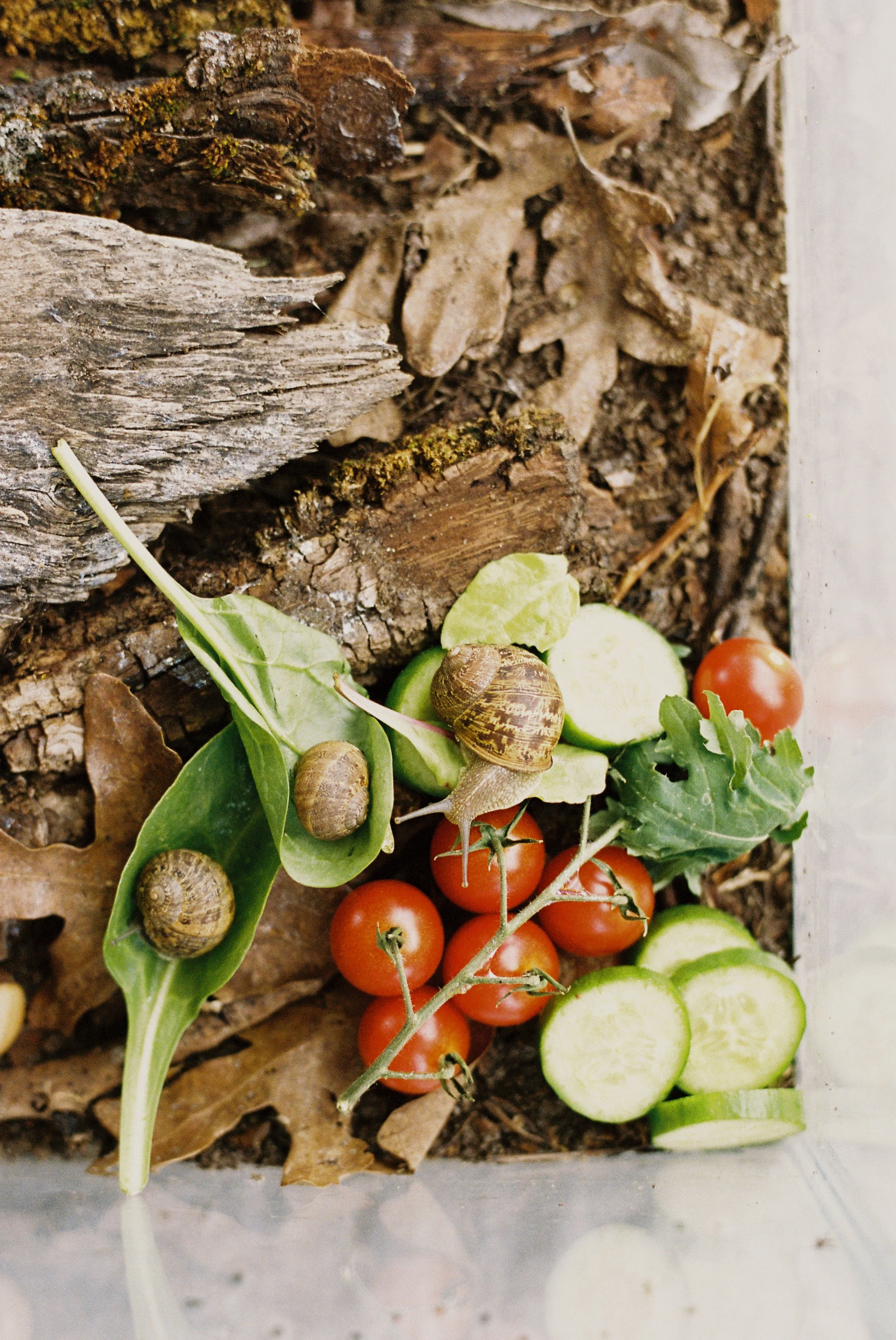
My Pet Snail
LESSON 2
Children explore the world of snails through observation and care, fostering responsibility and empathy.
The book “Are you a Snail?” by Judy Allen and Tudor Humphries
A small container to collect a snail friend.
Some fresh fruits and veggies
Materials
Gather materials.
Prepare a nature walk nearby where you think would be a good place to explore and find snails.
Preparations
Facilitate a hands-on learning experience in observing and caring for snails.
Encourage students to develop responsibility and empathy through the care of living organisms.
Promote critical thinking and observational skills.
Teach basic biological concepts and the importance of ecosystems through interaction with snails and their habitats.
Objectives for Teachers
Children understand the basic needs and behaviors of snails through observation and reading.
Children develop responsibility and empathy by creating and maintaining a habitat for the snails.
Children learn to identify and describe the physical characteristics and patterns of snails.
Children gain a hands-on understanding of biological concepts related to snails and their habitats.
Objectives for Children

Collect and Connect
Practice saying the poem “Don’t Rush Me Please” together with the actions you came up with.
Don’t Rush Me Please
I am a snail—
Don’t Rush me please.
I’m heading for
Those cherry trees.
I have no place
I have to be,
No pressing thing
I have to see.
I like this speed;
I like being slow;
It gives me time
To get to know
All the flowers
That I pass,
Every blade
Of every grass.
I am a snail.
This is my way.
Don’t rush me, please.
We’ve got all day.
-Barbara Vance

Activity Flow
Begin this lesson by reflecting on the previous lesson where children created a habitat for a snail. Here are some questions you might ask:
What did you enjoy most about creating the habitat for the snail?
How did you feel when you found out our mystery animal was a snail?
What was the most surprising thing you learned about snails while preparing their habitat?
2. Next, introduce your child to the cover of the story "Are You a Snail?" and explain that it's a fun book where we'll imagine ourselves as snails. Then, let them know that they'll be going outside to find a snail to observe and keep as a pet for our snail unit. This story will help us understand where we might find snails. Then read the story together to learn all about snails and where they like to hide.
3. After reading, initiate a discussion about the book. Here are some questions you could ask:
If you were a snail...
How would your life begin?
What would you look like?
How would you move?
What would you eat?
What would you be afraid of?
Where would you hide?
Would you come out during the daytime or nighttime?
4. Now that we’ve learned a bit more about snails, it's time to venture outside and find some of our own! Don't forget to bring a container with you so you can collect one or more snails, depending on the size of your habitat and your preferences. Once you spot a snail, take a moment and encourage your child to observe it in its natural habitat.
Is it nestled in a dark, damp spot like the book suggests?
Is the snail busy eating or taking a rest?
Do you notice any other snails nearby, or is it all alone?
Take a closer look at its shell. What colors and patterns do you see?
As you watch it move, does it glide quickly or move slowly?
5. Remind your child that when handling snails, it's important to wash their hands afterward. Snails can carry bacteria or germs that might make us sick, so washing hands is important to stay healthy.
6. Once you’ve observed and collected your snail(s), gently place them in the new home you created for them. It might be fun to name your new pet as well. To ensure they are properly cared for over the next couple of weeks, initiate a discussion about how everyone can help with their care and make a plan together. Make sure your snails have food and water available by spraying or sprinkling water throughout their habitat so they can drink.
7. Caring for the snails will allow children to practice responsibility, empathy, and compassion as they consistently meet the snails' needs. It also provides a hands-on learning experience about biology. Enjoy observing and caring for your snails until the next lesson!




